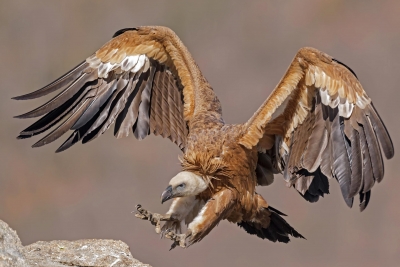
The Indian vulture, or Gyps Indicus, is a medium-sized, bulky scavenger native to India, Nepal and Pakistan. It weighs between 5.5 and 6.3 kg with females being smaller than the males. Its body is light brown and flight feathers are dark-brown. Its wings are broad and tail feathers are short. It has a bald head and neck and a longish bill.
The Indian vulture nests in colonies on cliffs, ruins and also in trees in central and peninsular India. It may also breed on tall human structures. Like other vultures, it is a scavenger, feeding mostly on carcasses, which it finds by soaring over open grassland and around human habitation. It often congregates in flocks.
It has been listed as ‘Critically Endangered’ on the IUCN Red List since 2002. The steady decline in its population in India is attributed to the use of Diclofenac in the treatment of cattle. This is an anti-inflammatory drug used in live-stock farming. When the cattle died, vultures that ate the carcasses died of Diclofenac-related kidney failure.
Vultures perform a pivotal role in keeping the environment clean and disease free. In their absence, the incidence of zoonotic dieases showed an increase due to corresponding increase in feral rat and dog populations. Due to this, the Indian Government banned the veterinary use of Diclofenac in March 2006 and is undertaking many captive-breeding programmes for these vultures. However, since vultures are slow to breed, the programmes are expected to take several years. The aim is to release captive-bred birds into the wild when the environment is clear of Diclofenac.
Picture Credit : Google




